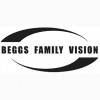1. TRACKING: your child's ability to move the eyes smoothly, accurately, and effortlessly. How to schedule a free vision screening: We invite you to call our office at 316-722-3740 and tell the receptionist that you want to schedule a free screening. She'll be happy to set up your appointment! The early years of life from birth until age five are crucial for a child's visual development and eye health.
The American Optometric Association recognizes how important it is to get your baby's vision off to a good start. InfantSEE is a free public health program for children during their first year of life; participating AOA optometrists provide a comprehensive infant eye assessment at no cost to the parents. Visit www.infantsee.org for more information.
We were the first practice in Kansas to offer free screenings to preschool kids and infants. We gladly do that too and we can tell you if your child has a problem that might lead to lazy eye, crossed eyes, and other difficulties. We strive to provide complete care for our patients/ learn more about all the services we provide.
The American Optometric Association recognizes how important it is to get your baby's vision off to a good start. InfantSEE is a free public health program for children during their first year of life; participating AOA optometrists provide a comprehensive infant eye assessment at no cost to the parents. Visit www.infantsee.org for more information.
We were the first practice in Kansas to offer free screenings to preschool kids and infants. We gladly do that too and we can tell you if your child has a problem that might lead to lazy eye, crossed eyes, and other difficulties. We strive to provide complete care for our patients/ learn more about all the services we provide.
Services
At Veo, each member of our vision care team is selected by Dr. Patrick Pirotte based upon his or her experience, professional demeanor, and dedication to providing personalized care to our optometry patients.
Our entire Veo therapy staff is committed to ensuring the comfort and satisfaction of each and every patient.
We will do our best to accommodate your busy schedule by finding appointment times that meet your needs.
Our entire Veo therapy staff is committed to ensuring the comfort and satisfaction of each and every patient.
We will do our best to accommodate your busy schedule by finding appointment times that meet your needs.
Strabismus, commonly referred to as crossed or wandering eyes, occurs when one or both eyes turns in or out, up or down.
The condition is caused by the brain's inability to coordinate both eyes simultaneously.
The brain is the master control center of vision; STRABISMUS IS A "BRAIN" PROBLEM.
The need for surgery is often oversimplified, such as "the weak eye muscles must be operated upon to realign the eye and correct the problem."
1 Since weak muscles aren't the cause of strabismus, then surgical intervention is addressing only a symptom, not the cause.
The condition is caused by the brain's inability to coordinate both eyes simultaneously.
The brain is the master control center of vision; STRABISMUS IS A "BRAIN" PROBLEM.
The need for surgery is often oversimplified, such as "the weak eye muscles must be operated upon to realign the eye and correct the problem."
1 Since weak muscles aren't the cause of strabismus, then surgical intervention is addressing only a symptom, not the cause.
Did you know that Newborns have all the eye structures necessary to see, but they haven't learned to use them yet?
Your baby holds the eyes roughly straight at birth from the BALANCE centers in the brain, NOT the vision centers.
This tells you how much work has to be done to see normally.
Thus, VISION IS A LEARNED SKILL, NOT an automatic one.
Newborns can hold their gaze on an object for a few seconds, but by 8-12 weeks they should start to follow people or moving objects with their eyes.
By 2-4 months they should start to move their eyes independently with much less head movement.
Your baby holds the eyes roughly straight at birth from the BALANCE centers in the brain, NOT the vision centers.
This tells you how much work has to be done to see normally.
Thus, VISION IS A LEARNED SKILL, NOT an automatic one.
Newborns can hold their gaze on an object for a few seconds, but by 8-12 weeks they should start to follow people or moving objects with their eyes.
By 2-4 months they should start to move their eyes independently with much less head movement.
Current research shows that about 20% of school-aged children have undetected vision problems which are hindering their school performance.
Many of these children have passed their school's vision screening, which is only designed to check children's distance vision as measured by the 20/20 line on the eye chart.
You MUST have the 3 PILLARS of vision checked to know if you have a vision related learning problem.
At least 50% of kids with learning problems have vision problems contributing to their struggles.
Many of these children have passed their school's vision screening, which is only designed to check children's distance vision as measured by the 20/20 line on the eye chart.
You MUST have the 3 PILLARS of vision checked to know if you have a vision related learning problem.
At least 50% of kids with learning problems have vision problems contributing to their struggles.
Most don't know the fraction 20/20 is merely being able to read the size of font at a distance of 20 feet.
It's your "eyesight".
EYE TEAMING: The skill that allows both eyes to work together in a precise and coordinated way.
Good eye teaming allows sustained, single, and comfortable vision, and is the basis for depth perception.
FOCUSING: Being able to quickly focus from far to near with ease to sustain clear vision for prolonged periods of time.
The only eye test most children have is a brief screening at school which only checks their distance vision using the eye chart.
It's your "eyesight".
EYE TEAMING: The skill that allows both eyes to work together in a precise and coordinated way.
Good eye teaming allows sustained, single, and comfortable vision, and is the basis for depth perception.
FOCUSING: Being able to quickly focus from far to near with ease to sustain clear vision for prolonged periods of time.
The only eye test most children have is a brief screening at school which only checks their distance vision using the eye chart.
Reviews

Be the first to review Wichita Vision Development Center.
Write a Review



